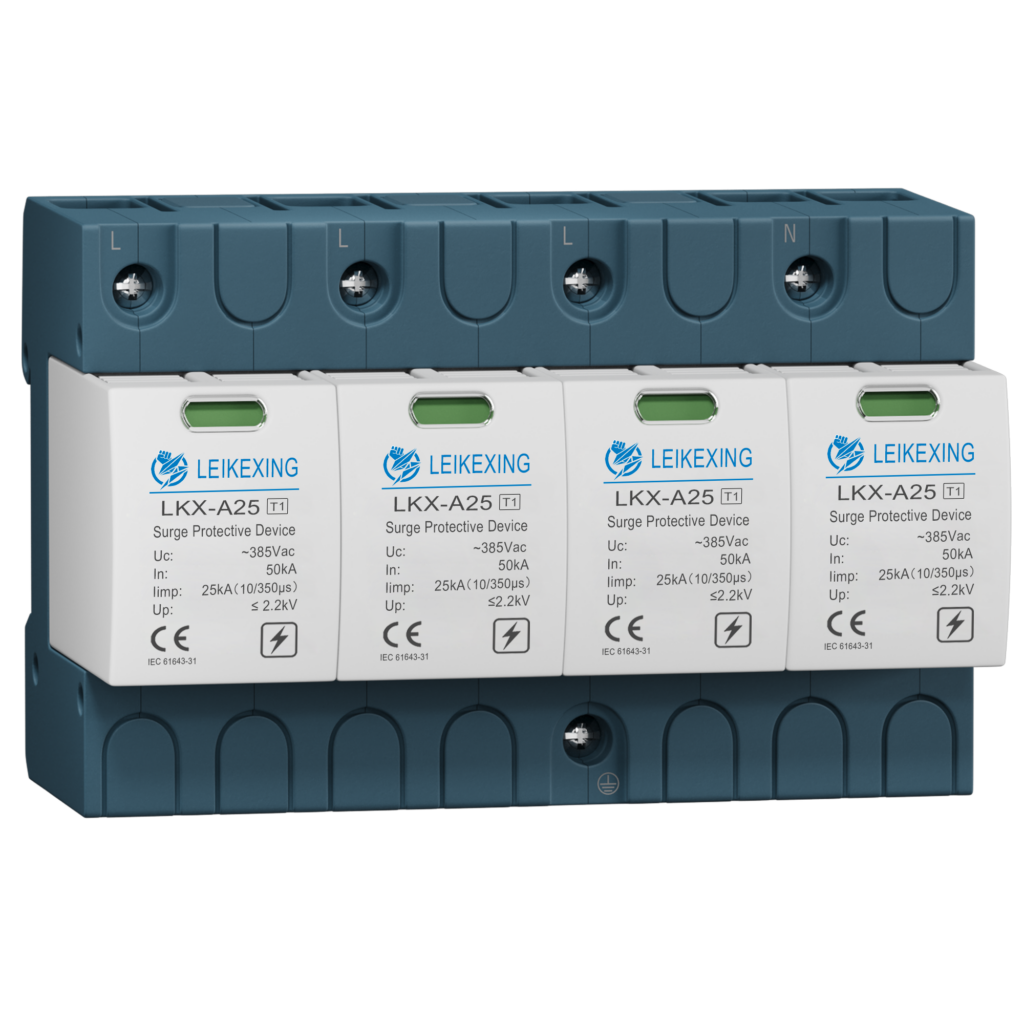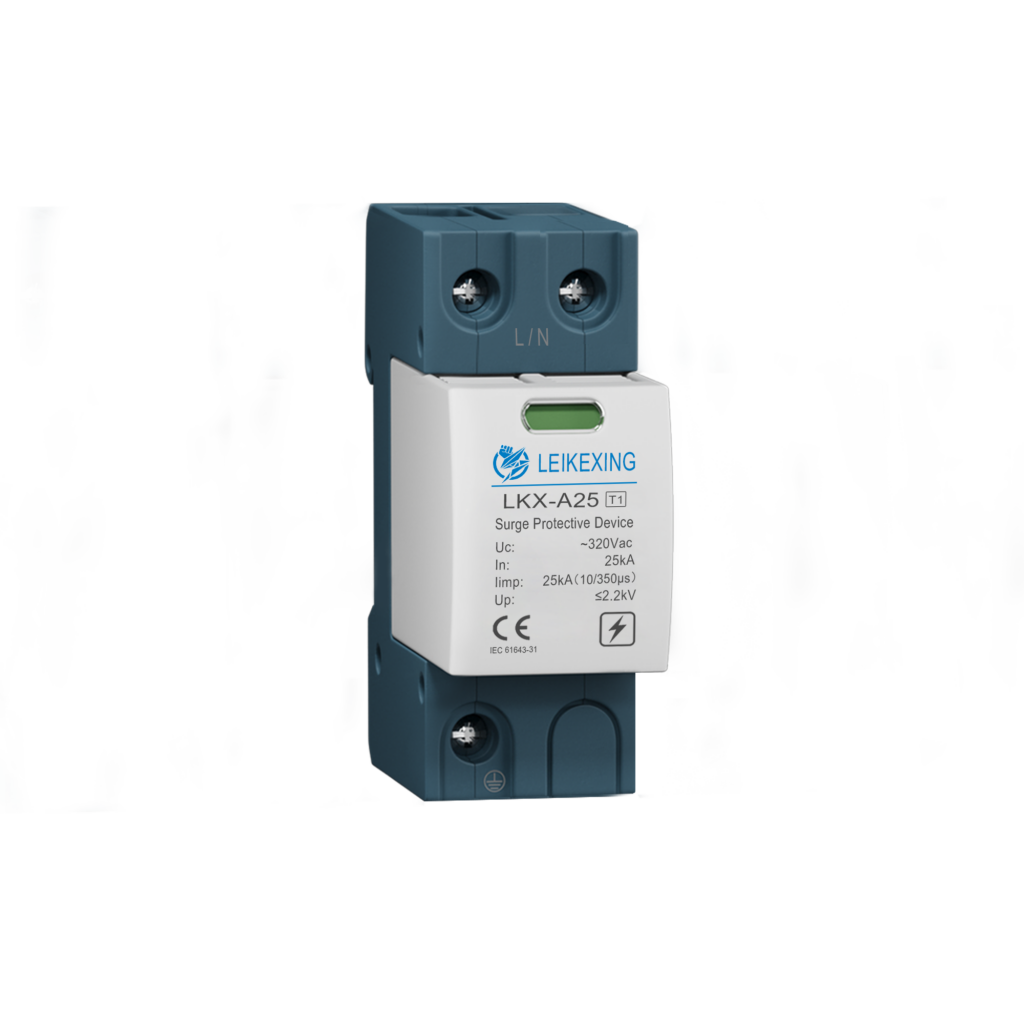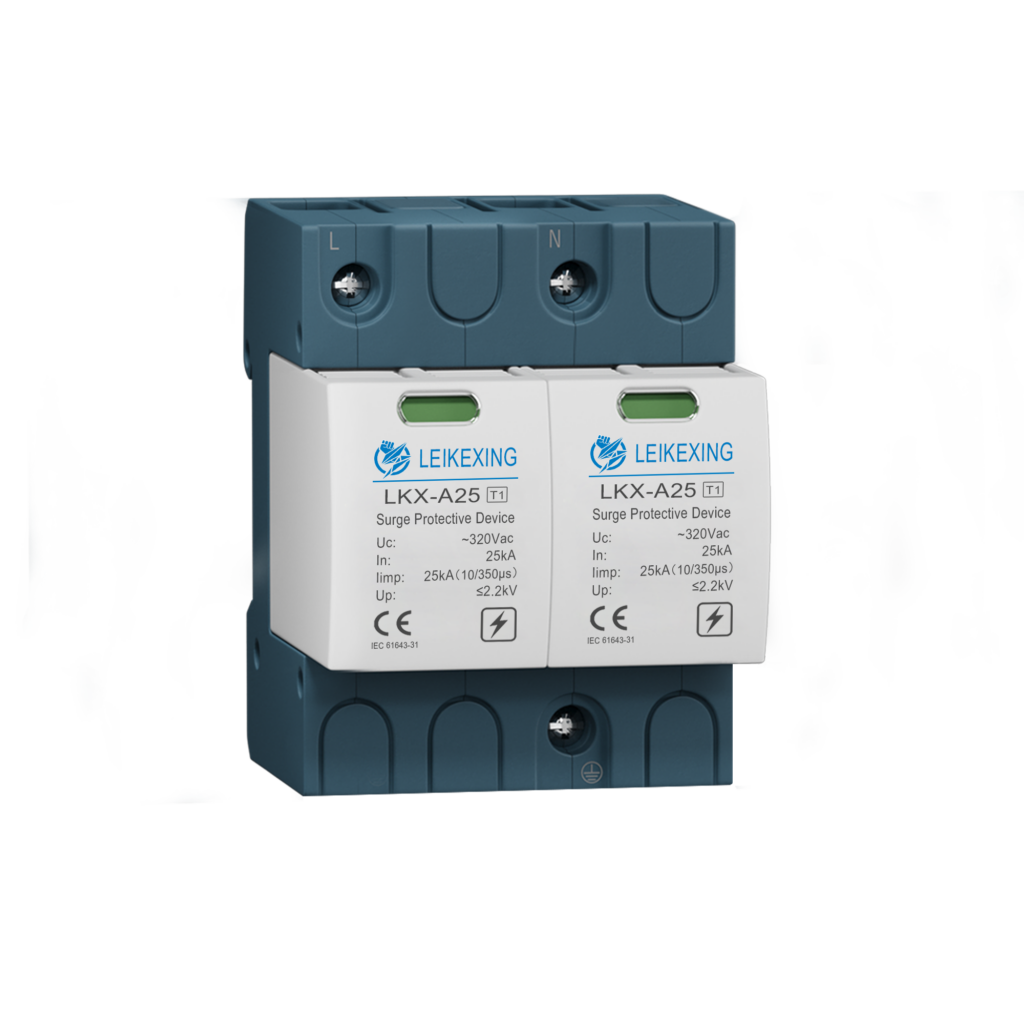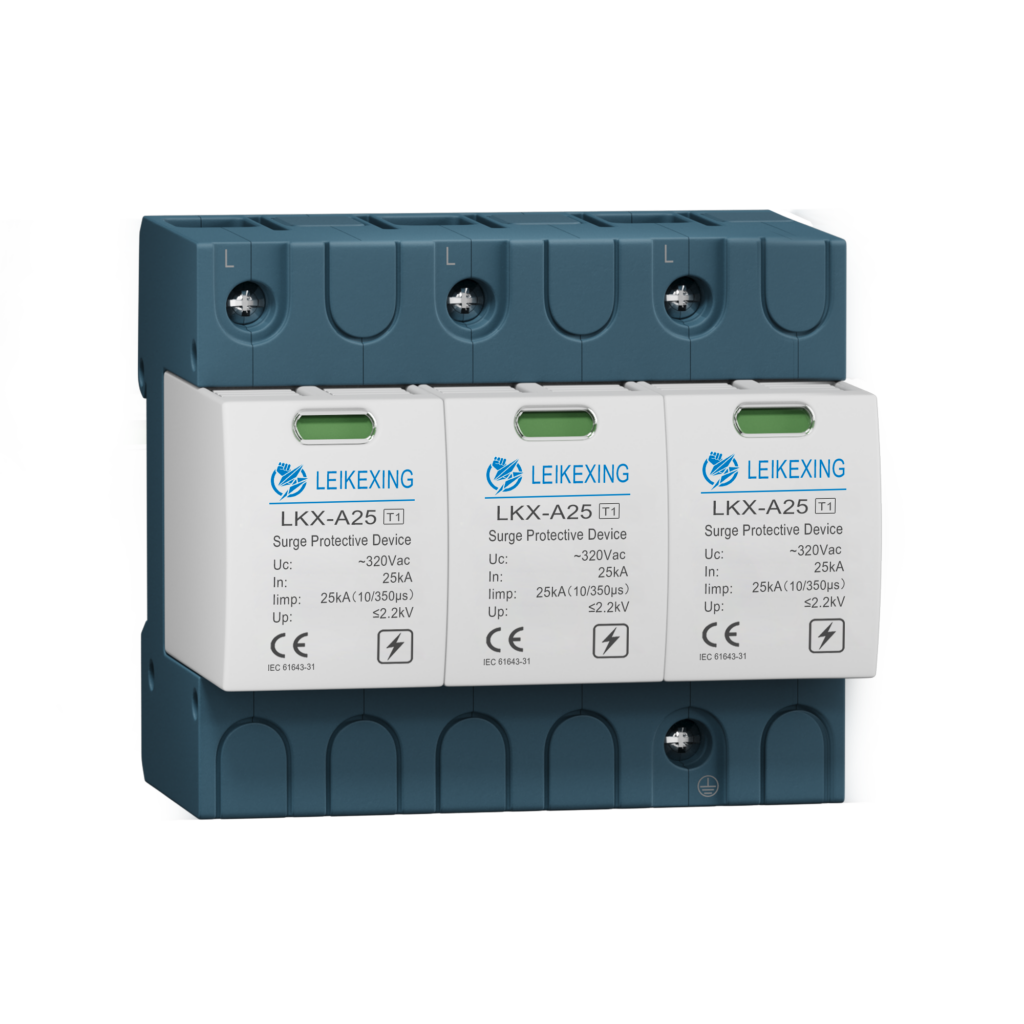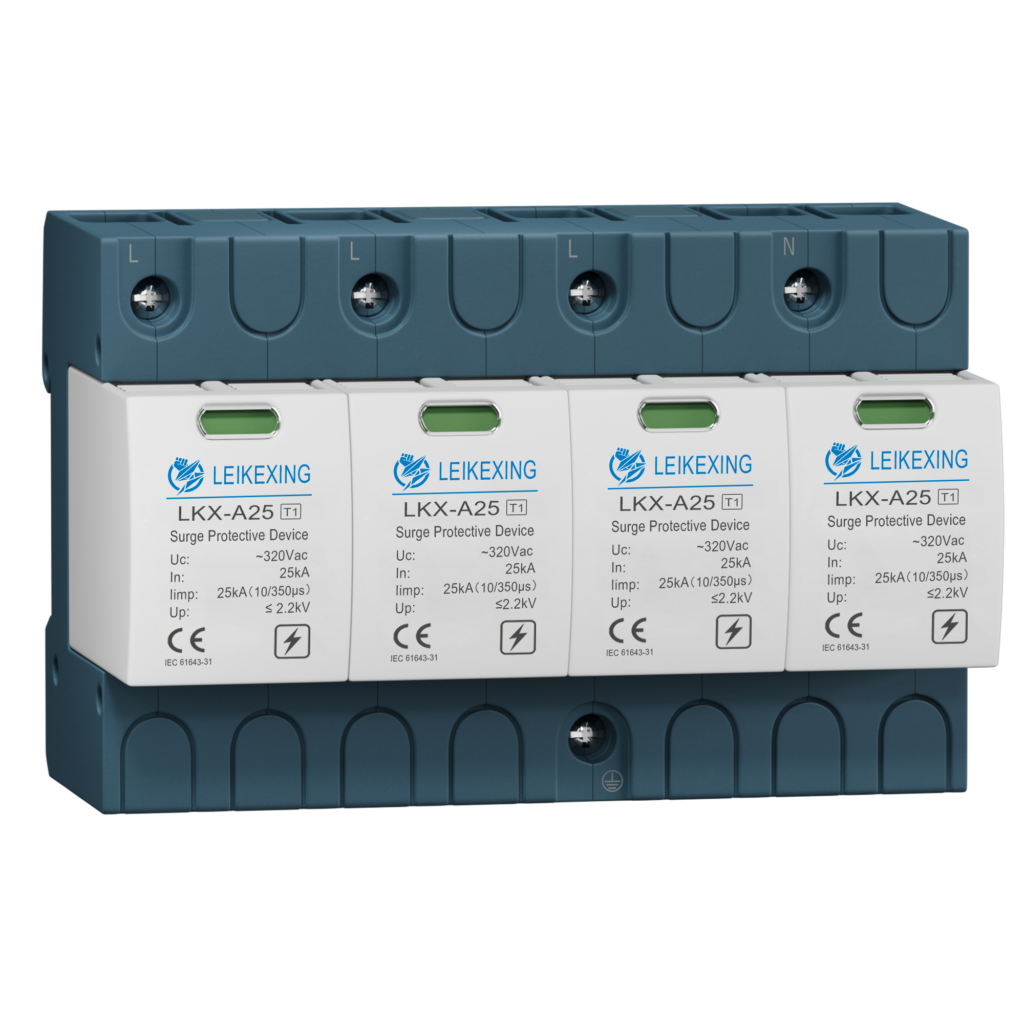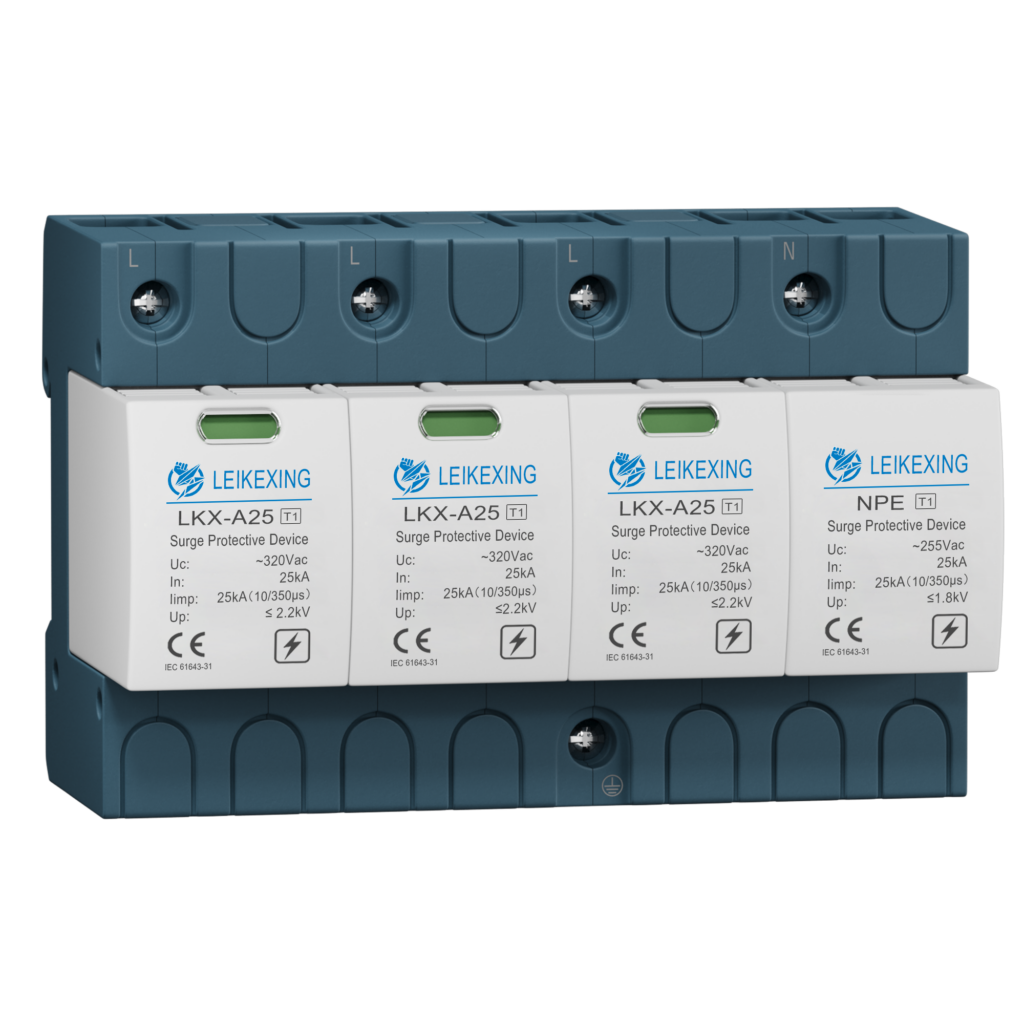-1-1024x576.png)
Type 1 Surge Protector (SPDs)Manufacturer
Type 1 Surge Protective Device
Leikexing Electric is a professional manufacturer of surge protectors, specializing in the production of high-quality surge protectors (SPDs).
Leikexing Electric has 8 years of experience in the production of surge protectors, with an annual output of nearly 5 million surge protectors (SPDs).
Leikexing Electric always puts customers at the center and takes product quality as the core concept, providing the highest quality products (SPD) and the most satisfactory services.
Type 1 Surge Protector (SPDs)
Leikexing series single-phase/three-phase AC type 1 surge protector
Type 1 surge protectors are usually installed in areas with high risk of direct lightning strikes, such as external power lines of buildings, independent main distribution boxes, main incoming lines of main distribution cabinets, and low voltage sides of transformers. These installation positions ensure that the protector can respond and distribute surge currents in a timely manner, thereby protecting subsequent electrical equipment and circuits.
Type 1 Surge Protector (SPDs)
Leikexing series single-phase/three-phase AC type 1 surge protector
The key parameters of Type 1 surge protector include: surge current Iimp, maximum continuous operating voltage Uc, voltage protection level Up, and response time tA. These parameters are crucial for evaluating and selecting the performance of surge protectors.
Specification parameters:
◆ Type 1/T1/Class B
◆ Nominal voltage Un: 230V 400V
◆ Max. continuous operating voltage Uc: 275V/320V/385V/440V
◆ Nominal discharge current (8/20 μs) In = 25kA Type 2
◆ Impulse discharge current (10/350 μs) Iimp = 25kA Type 1
◆ Maximum discharge current (8/20 μs) Imax = 100kA Type 2
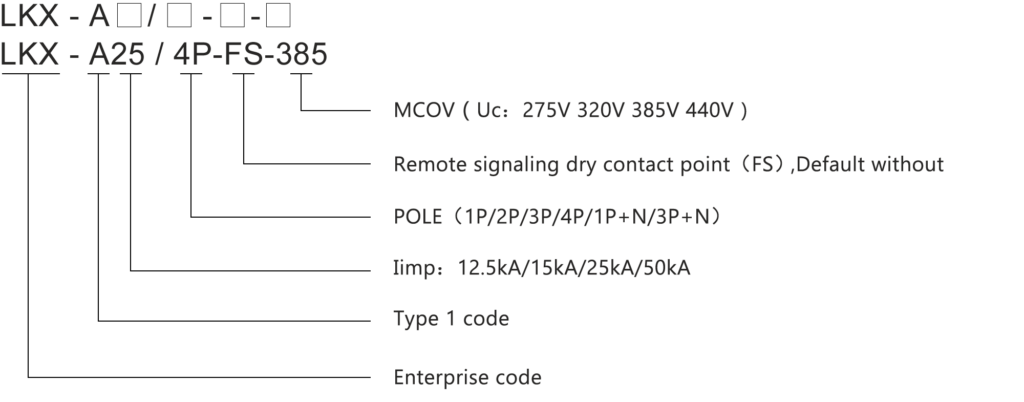
Wiring Diagram & Installation
Leikexing series single-phase/three-phase AC type 1 surge protector
Type 1 surge protector should be installed in the building’s main distribution box or outdoor distribution cabinet. Type 1 surge protectors are usually installed at the entrance of low-voltage distribution systems, close to the protected equipment, to shorten the protection path, reduce the attenuation of surges during transmission, and improve protection efficiency.


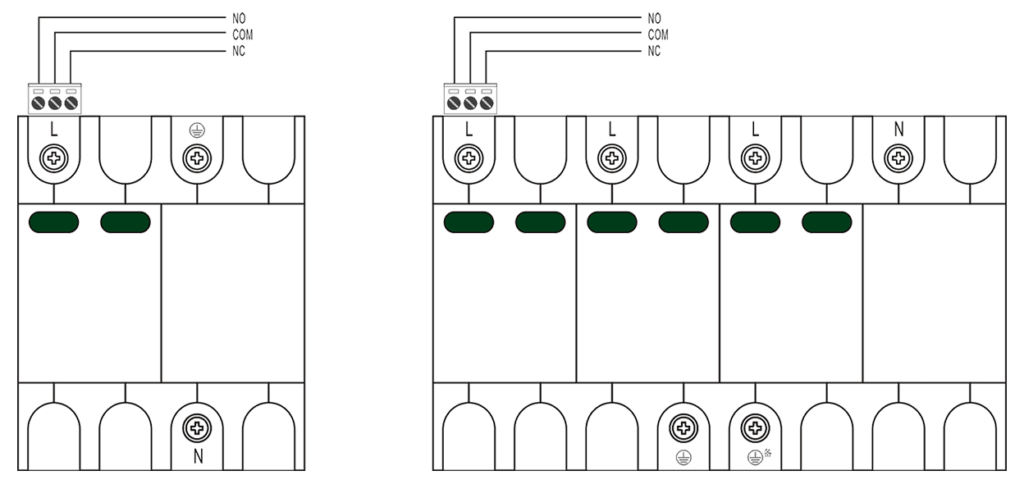
The function of Type 1 surge protector
Preventing lightning waves from directly entering the interior of system equipment and causing damage:
Type 1 surge protector has an isolation function, which can prevent lightning waves from directly entering the interior of system equipment and causing damage.
Adapting to changes in the operation mode of the power system:
When the operation mode of the power system changes, such as changing from AC power supply to DC power supply or from DC power supply to AC power supply, Type 1 surge protector can adapt to these changes, ensuring the normal operation and safe and reliable working state of the equipment.
Adapting to changes in the environmental conditions of the power system:
When the operating environment of the power system undergoes significant changes, such as being installed outdoors or in open spaces, Type 1 surge protector can adapt to these changes in environmental conditions.
Protecting circuits with important loads:
For circuits with important loads and critical components, Type 1 surge protector can reduce the probability of direct lightning strikes and ensure the safety of these important circuits.
In addition, the working principle of a first level surge protector is that when a surge current or voltage suddenly occurs in the circuit due to external interference, the valve core of the surge protector quickly acts to turn off the power supply, thereby avoiding damage to the protected equipment. Simultaneously limit the hazards of abnormal overvoltage or overcurrent in the circuit. After troubleshooting and restoring power supply, the valve core automatically opens to release energy, thereby achieving the on-off function
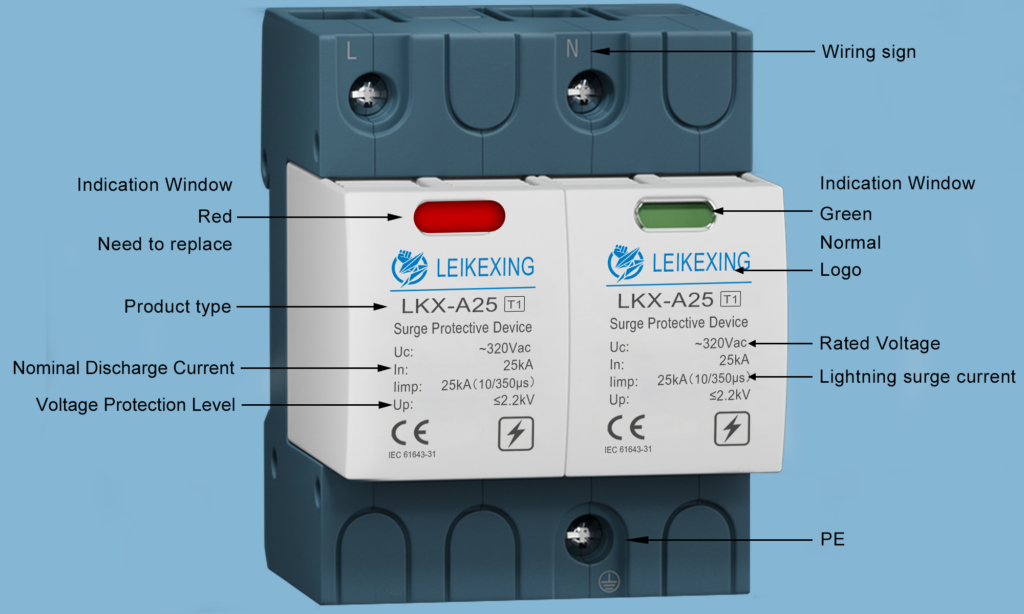
Precautions for installation of type 1 surge protector:
★Location selection:
The location selection of Type 1 surge protector is crucial as it directly affects the lightning protection effect. Installing it near the main equipotential connection terminal can ensure that the protector can respond quickly and effectively guide lightning to flow into the ground during lightning strikes, thereby protecting the equipment.
★Wire selection:
The connecting wire should be as short and straight as possible, as the impedance and inductance of the wire can generate additional overvoltage in the circuit, thereby reducing the protection effect. By keeping the wires short and straight, the occurrence of these additional voltages can be reduced.
★Grounding requirements:
The reliable connection of the grounding wire is the key to ensuring the effective release of lightning current. The diameter of the grounding wire must meet the minimum cross-sectional requirement to ensure sufficient conductivity.
★Line isolation:
The isolation between protected and unprotected lines can prevent unprotected lines from inducing lightning surge voltage to protected lines, achieved through shielding devices or maintaining a certain spatial distance.
★Wire type:
Using multi stranded copper wire as a grounding wire can better guide lightning current, while single stranded copper core wire is less effective in this regard. Multi stranded copper wire can provide better conductivity and faster current release speed.
★Add some practical operational details:
During the installation process, the following points should also be noted:
Power off operation: Before wiring, the power must be disconnected and a voltage detector must be used to confirm that the circuit has indeed been powered off to ensure the safety of the operator.
★Tool preparation:
Prepare the necessary tools such as screwdrivers, insulation tape, cable cutters, etc.

